Free download: Top 10 Natural & Easy Remedies for Joint Pain from Home. Learn these helpful remedies.
Estimated Reading Time: 6 minutes read
Dealing with neck pain from pinched nerves can be really tough. It’s a common problem that lots of folks face, often because of things like stress, not sitting right, or doing the same movements over and over. This kind of neck pain can make it hard to do your daily stuff and can really get in the way of feeling good. Understanding what causes this pain and how to fix it is super important.
Exercise can be a big help when it comes to sorting out this kind of neck pain. They work by loosening up tight muscles, making your neck move easier, and building up strength so your neck can support itself better. Doing these exercises regularly can make a big difference in how your neck feels and can help keep the pain from coming back.
Table of Contents
Causes of Neck Pain from Pinched Nerves
Neck pain from pinched nerves often comes from muscle tension caused by stress or bad posture. When your muscles are tight, they can press on the nerves, leading to pain.
Doing the same kind of movements often, like at work or while playing sports, can irritate your neck nerves. Even how you sit or sleep can strain your neck if you’re not in a good position. Sometimes, an injury or a sudden jolt can pinch a nerve, immediately causing sharp pain.
- Muscle Tension: Stress or poor posture can lead to muscle tightness, compressing the nerves.
- Repetitive Motions: Repetitive neck movement can irritate or compress the nerves.
- Poor Posture: Slouching or maintaining an awkward position for prolonged periods can put pressure on neck nerves.
- Injuries: Accidents or sudden movements can cause nerve compression in the neck area.
Benefits of Exercise for Neck Pain
Doing exercises for your neck can help ease the pain from pinched nerves. These exercises relax the muscles, taking some pressure off the nerves. Stretching makes your neck more flexible, helping to keep it from getting stiff.
Strengthening exercises build up the muscles in your neck, giving it better support. This not only helps with current pain but also can keep your neck from hurting again in the future.
- Relieving Tension: Exercises, especially stretching, can help relax tight muscles, reducing nerve pressure.
- Improving Flexibility: Regular stretching increases neck mobility, preventing stiffness.
- Enhancing Strength: Strengthening exercises provide better support to the neck, reducing the likelihood of future nerve compression.
Exercises and Stretches to Alleviate Neck Pain
A: Soft Tissue Mobilization
Using a lacrosse ball for soft tissue mobilization can significantly alleviate neck spasms. This technique targets trigger points that often contribute to neck pain.
- Rolling the ball gently against the neck and upper back areas helps release muscle tension.
- Regular use can improve flexibility and reduce the likelihood of spasms.
B: Stretching Exercises
1. Levator Scapulae Stretch
- Begin by sitting upright in a chair.
- Depending on the side of pain, place that hand on the seat. For instance, if your right side aches, use the right hand.
- With your opposite hand, gently grasp the side of your head.
- Apply a gentle pressure to guide your gaze toward the opposite armpit.
- Hold for 30 seconds and repeat three times.

2. Pec Stretch

- Standing in front of your doorway, raise your arms up to shoulder height like a goalpost. The elbows will be bent with the palms facing forward.
- Keeping this position, rest the arms against your doorway.
- Slowly lean forward into a gentle stretch and hold for at least 30 seconds.
- Repeat this stretch for a total of 3 times.
C: Strengthening Exercises
1. Chin Tucks


- You can perform a chin tuck laying on your back or sitting or standing.
- Gently tuck the chin directly back as if trying to make a double chin. Avoid nodding your head.
- Hold this position for 2 seconds, then slowly relax your muscles.
- Repeat 10 repetitions.
2. Scapular Retraction
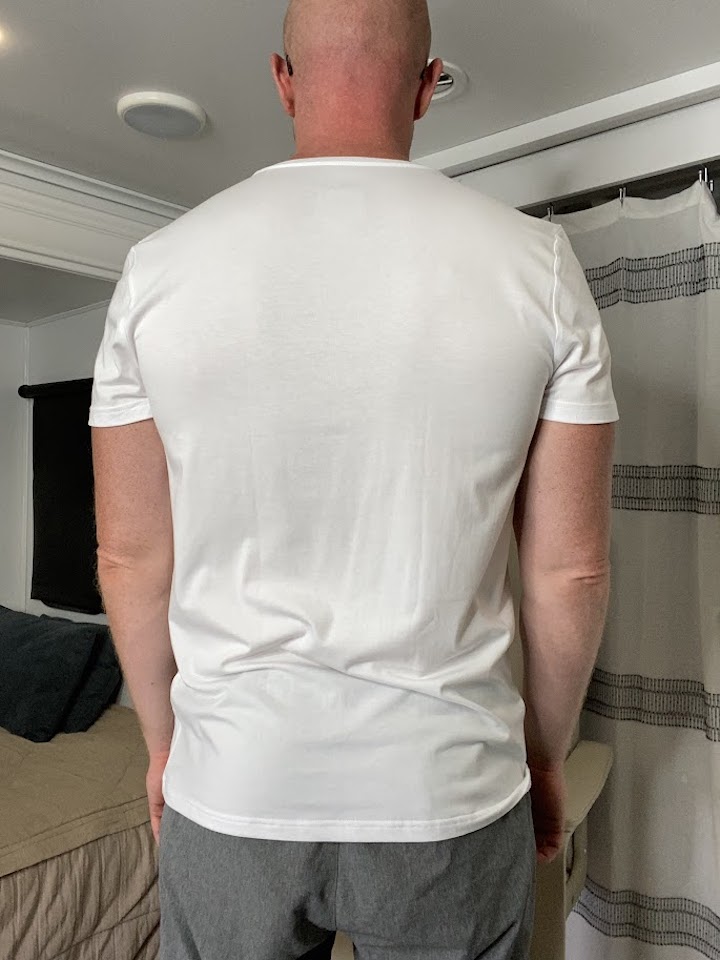
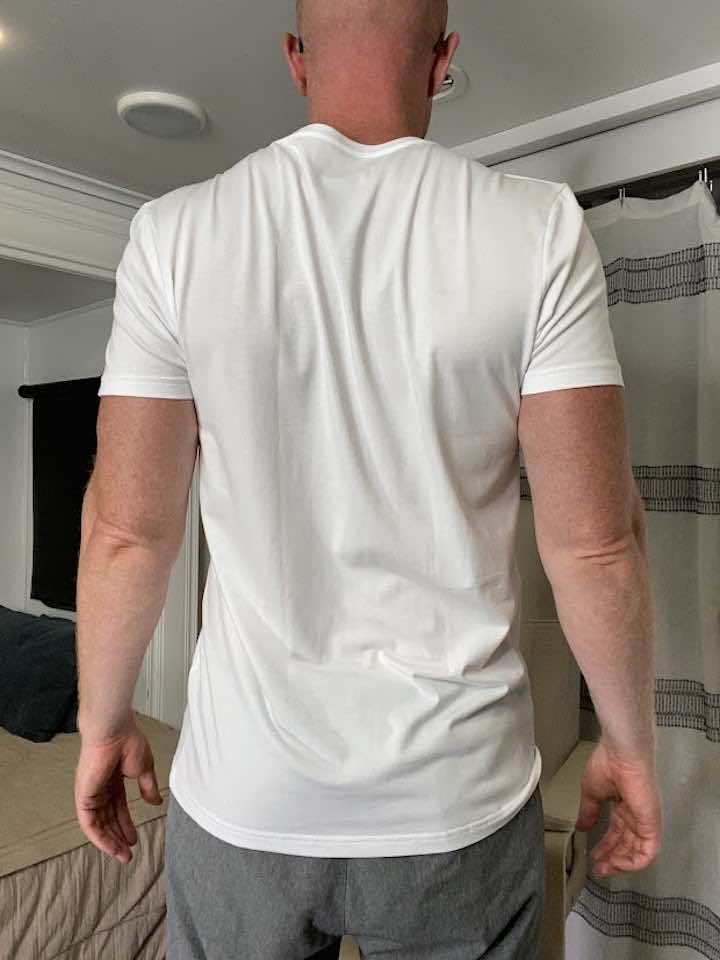
- In a sitting or standing position, try to sit as straight as possible. Aim to position the head in a neutral position as possible.
- Gently pull the shoulders back and squeeze the shoulder blades together.
- Hold for 5 seconds, then relax.
- Repeat 10 repetitions for 3 sets.
3. Rows with Resistance Band
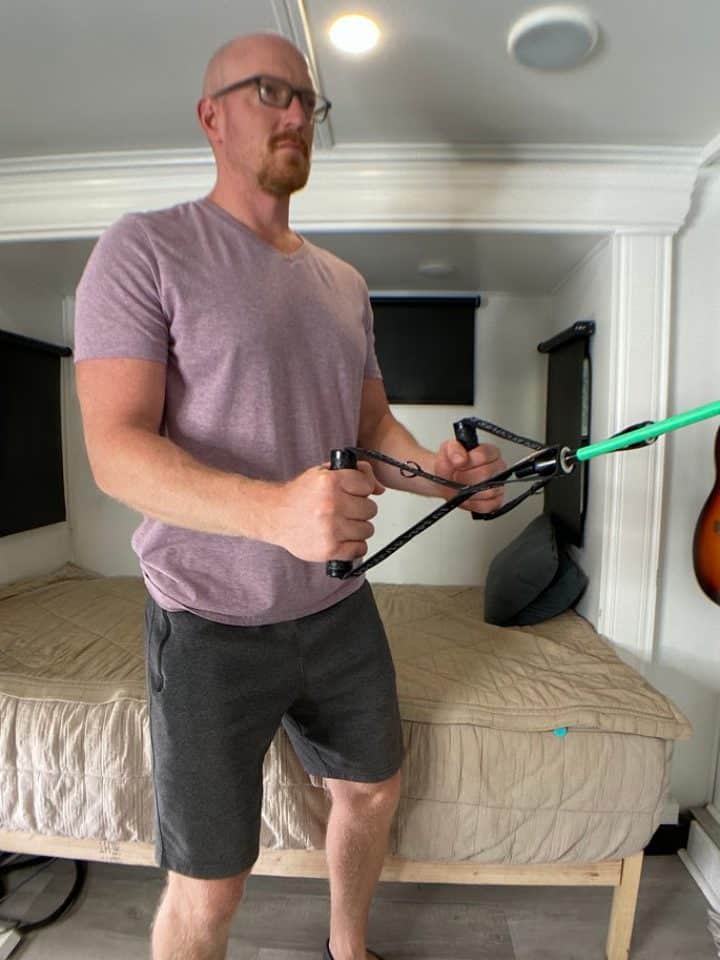
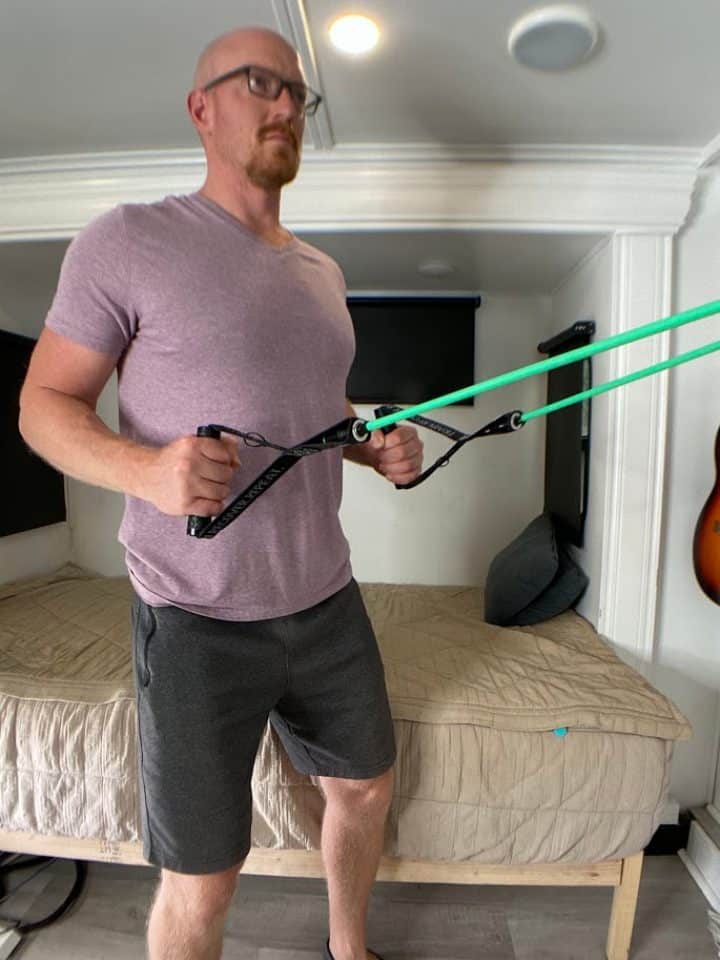
- Hold on to the ends of a resistance band (light, medium or heavy), which you can attach to a door knob.
- Begin with the arms elevated in front of you to shoulder height and the palms facing each other.
- Step back far enough that the resistance bend has a little tension.
- Pull back on the band by bending the elbows and swinging the arms back next to you. Make sure to squeeze the shoulder blades together.
- Hold for 2 seconds, then return to your starting position.
- Repeat 10 repetitions for 3 sets.
4. External Shoulder Rotation with a Resistance Band

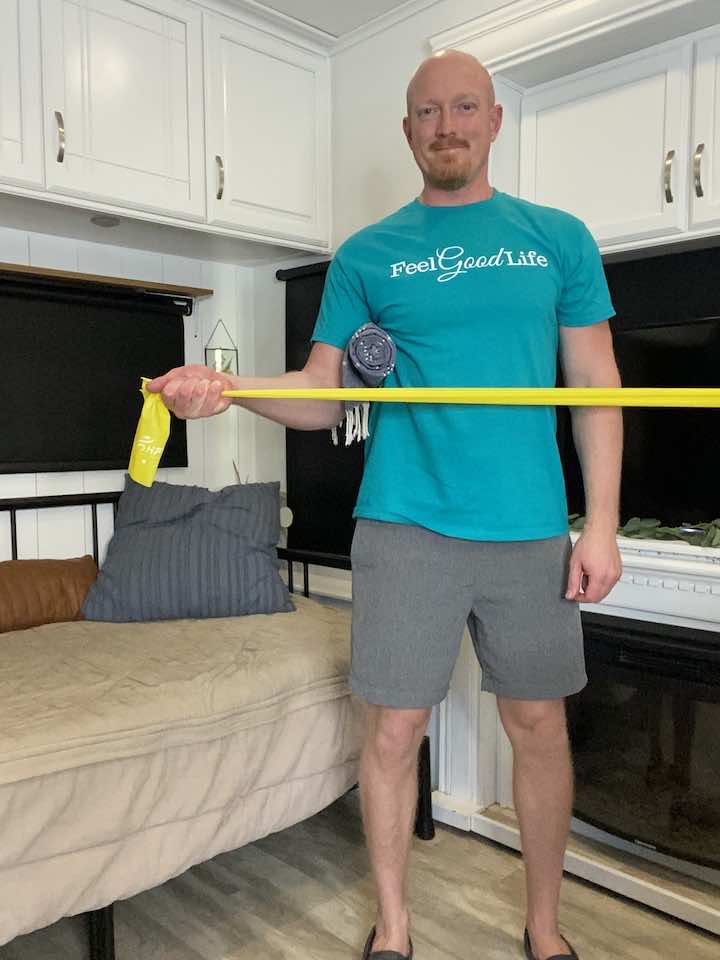
- Attach one end of the resistance band to a secure location, such as a doorknob or post, at the height of your elbow to perform the correct motion.
- Stand facing the band and hold the other end with your hand on the same side, elbow bent at a 90-degree angle and tucked by your side, and palm facing towards your body.
- Keeping an upright posture, slowly pull the band away from your body, rotating your arm outward and away from your torso while maintaining the 90-degree angle of your elbow.
- Hold this position for 2 seconds, then return to your starting position.
- Repeat the movement for 10 repetitions, then switch to the other arm.
- Aim for 3 sets of this exercise.
5. Internal Shoulder Rotation with a Resistance Band
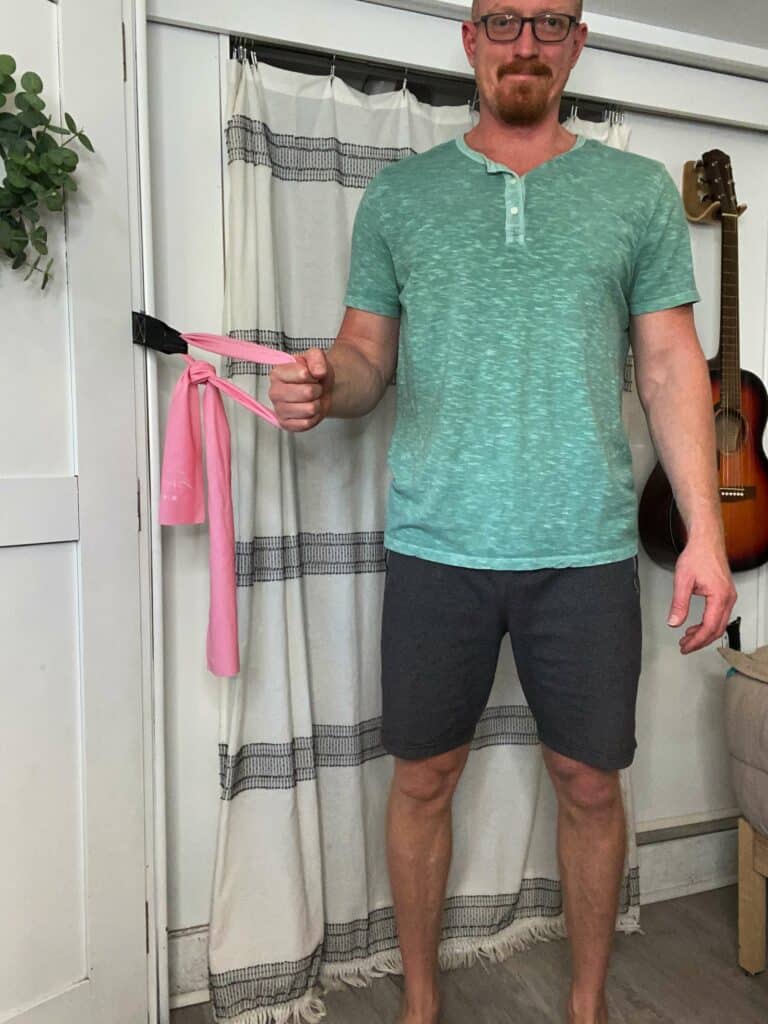
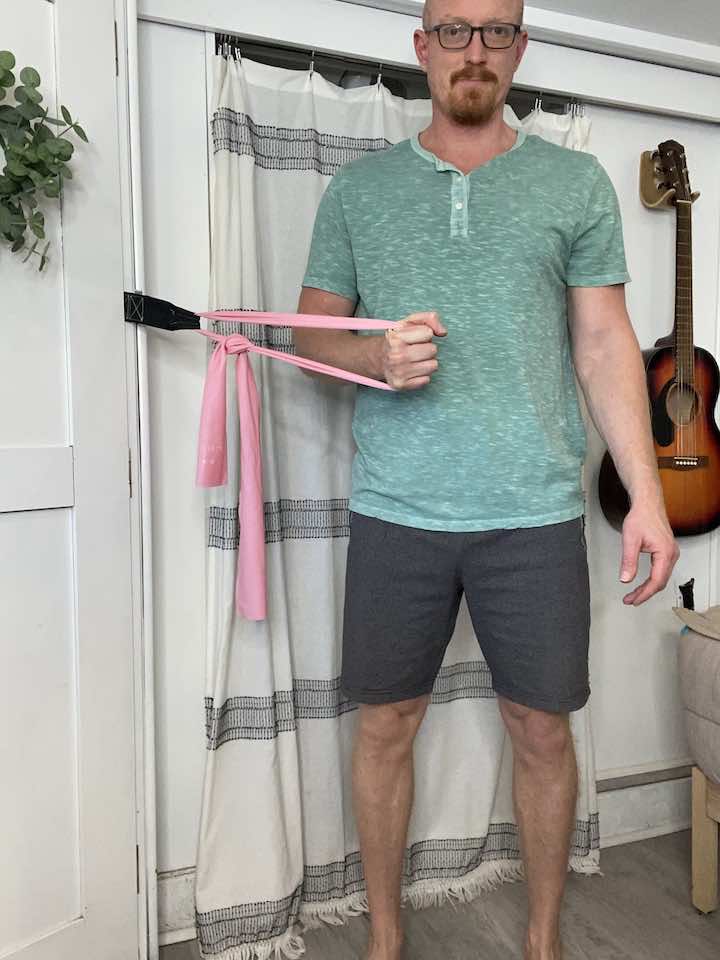
- To perform this exercise, you will need to attach one end of the band to a secure location, such as a doorknob or post, at the height of your elbow to perform the correct motion.
- Keeping an upright posture, slowly pull the band towards your stomach while maintaining the 90-degree angle of your elbow.
- Hold for 2 seconds, then return to your starting position.
- Repeat the movement for 10 repetitions, then switch to the other arm.
- Aim for 3 sets of this exercise.
Conclusion
Doing these exercises regularly can be a real game-changer if you’re dealing with neck pain from pinched nerves. They’re not just about getting rid of your pain now – they also help keep your neck healthy in the long run. By stretching and strengthening your neck muscles, you’re giving your neck the support it needs to avoid future problems. It’s like taking care of a plant – a little bit of regular care makes a big difference.
Remember, if your neck pain doesn’t improve or doing these exercises causes more discomfort, it’s a good idea to talk to a doctor or a physical therapist. They can give you advice that’s just right for your situation. Neck pain can be a hassle, but with the right approach, you can return to feeling good and doing the things you love.







